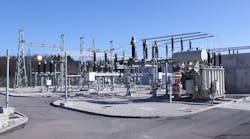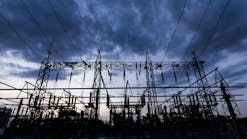Energy Grid Modernization Means Better Monitoring of the 'Invisible Grid'
The power grid is a key component of our nation’s infrastructure, powering communities of all sizes across the country and keeping the crucial systems that society relies on up and running.
However, the grid is quickly aging — with the Department of Energy finding that 70% of U.S. transmission lines and power transformers are more than 25 years old and 60 percent of circuit breakers are over 30 years old. What’s more, as the rise of electric vehicles, rooftop solar and distributed generation place a heightened strain on our aging systems, consumer expectation around critical loads such as at hospitals, data centers and 911 call centers are rapidly increasing as well.
A rise in extreme weather events has also exacerbated many of these challenges. Vast temperature swings throughout the year mean households will have to use more heat and air conditioning, which are already the biggest single uses of electricity in the residential sector today. As storms like those recently seen in Florida this past September grow more severe, the average annual number of weather-related power outages will continue to increase, growing by 78% over the past decade.
The impact of these outages on the U.S. economy is undeniable — the Department of Energy last estimated that frequent power outages cost American businesses around US$ 150 billion per year. And as our country continues to manage its aging grid while facing an increased amount of devastating weather events, these blackouts could prove deadly, especially for the sick and elderly who rely on electricity to power lifesaving medical devices.
The imperative to upgrade our antiquated grid infrastructure has never been greater.
While the recently passed Infrastructure Investment and Jobs Act and Inflation Reduction Act earmarked significant funding to improve high-voltage transmission and electric vehicle infrastructure, comparably less attention was given to the lower voltage distribution grid in either piece of legislation.
This poses a significant problem, as we need a new methodology for low voltage grid operations — one that allows us to build a modern and digitized grid equipped to handle the energy demands and expectations of the 21st century. From addressing two way power flows with distributed generation to developing systems to identify abnormal performance at the point of interconnection, as well as detect equipment issues, it is essential that system operators improve their visibility into the distribution grid to mitigate and prevent potential problems before they occur.
This means monitoring our transformers better, as extending the life of these crucial assets is paramount to building a more resilient grid. With more than 70% of downtime and service costs caused by aging infrastructure near and around transformers, real-time monitoring can give operators 24/7 visibility into a transformer's condition and critical metrics at the grid’s edge. From data on transformer load and oil temperature to detection around power theft, these insights enable utilities to quickly isolate potential problems, reduce restoration time and make proactive, data-driven decisions to prevent future failures and improve performance.
This also means expanding resiliency planning efforts to assets beyond the transformer – from the “invisible grid” between the substation to the meter to the thousands of poles in between that are responsible for delivering electricity. By actively monitoring the many assets that make up the distribution grid, operators can enhance their situational awareness to better identify, respond to and fix issues that can arise. Take for instance, momentary outages. These short, micro outages are often the result of a loose connection, damaged or failing equipment or vegetation that is interfering with the power lines. By identifying these normally unreported outages, operators are able to address the problem and deploy maintenance crews before equipment fails or a limb takes out an entire line.
As severe weather continues to intensify around the country, this work is especially crucial to preventing inevitable storm damage and to quickly restoring services after such events. By investing in remote sensors to place on poles, operators can receive up-to-the-minute data on asset tilt and movement, as well as impact and vibration levels, allowing them to efficiently identify specific poles that have been structurally damaged by wind or rain, leaning due to saturated soil conditions or are particularly at-risk leading up to concerning weather. As a result, following a storm, instead of having to visually survey millions of poles across an entire state – a process that could take days – utilities can dispatch crews to the precise location of a downed pole to address in a matter of just hours, or as soon as weather permits.
With this level of detailed, comprehensive insight into the health of their assets, utilities can maintain a more resilient and effective grid. However, our country needs far greater investment in these tools.
Two major pieces of infrastructure legislation have come and gone with little funding to improve our visibility into the grid. As this issue continues to remain front and center in Washington, lawmakers ought to prioritize investment in the greater development and implementation of technology to address the many visibility gaps in the distribution grid. Reliable electricity is an essential component of a thriving economy. We have to get to work.
Ian Aaron is the CEO of Ubicquia.


